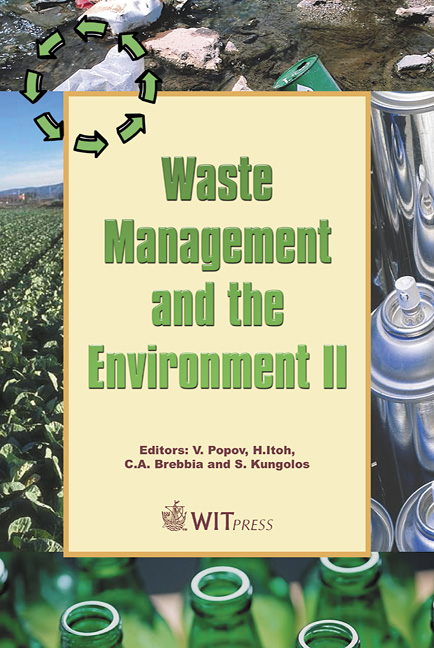An Integrated Approach For The Assessment Of Toxic Properties Of Fly Ash
Price
Free (open access)
Transaction
Volume
78
Pages
10
Published
2004
Size
272 kb
Paper DOI
10.2495/WM040551
Copyright
WIT Press
Author(s)
V. Tsiridis, M. Petala, P. Samaras & G. P. Sakellaropoulos
Abstract
The physicochemical and toxic properties of fly ash samples obtained from various coal combustion power plants were evaluated in this work using an integrated approach including chemical analyses and bioassays. Physicochemical analyses showed that Al, Ca, Fe, Mg and Si were the elements presented in high concentrations in all solid samples. The results of the chemical analysis of eluates deduced by the application of standard leaching tests according to EN 12457-2 and TCLP methods indicated that the compounds contained in the fly ash samples presented a potential to be transferred to the liquid phase depending upon the leaching method used. The pH values of the EN eluates were in most cases in the high alkaline range, ranging from 9.5 up to 12.7, while the pH value of TCLP eluates varied between 3.9 and 7.5. The leachability of the compounds was higher in TCLP leaching test, indicating that the initial pH value of the leaching medium affected significantly the transfer of these elements to the liquid phase. The photobacterium Vibrio fischeri (Microtox test), the crustaceans Daphnia magna and the rotifers Brachionus calysiflorus were used for the toxicity measurement of the eluates obtained by the EN leaching test, suggesting that the toxicity of the eluate samples depended on the test organism used. The toxicity of the fly ash samples and the corresponding solid filter residuals that were remained after the EN and TCLP leaching tests was also measured using the Microtox Basic Solid Phase Test. Keywords: fly ash, toxicity, leaching tests, Microtox, Daphnia magna, Brachionus calysiflorus, heavy metals.
Keywords
fly ash, toxicity, leaching tests, Microtox, Daphnia magna, Brachionus calysiflorus, heavy metals.





